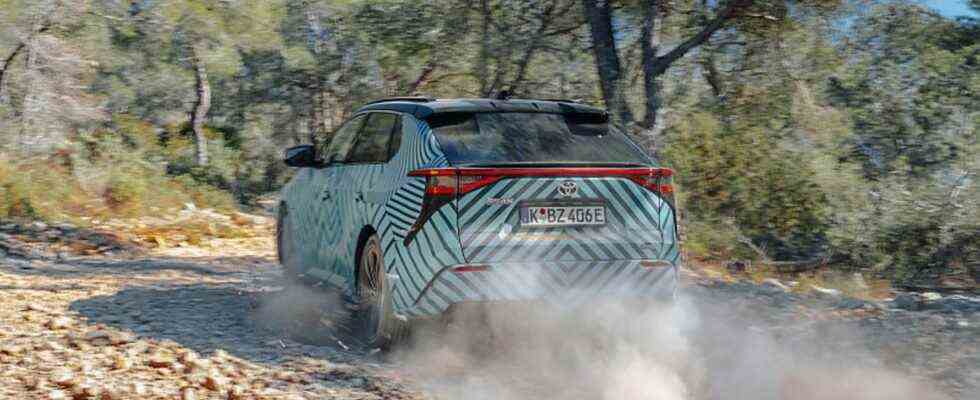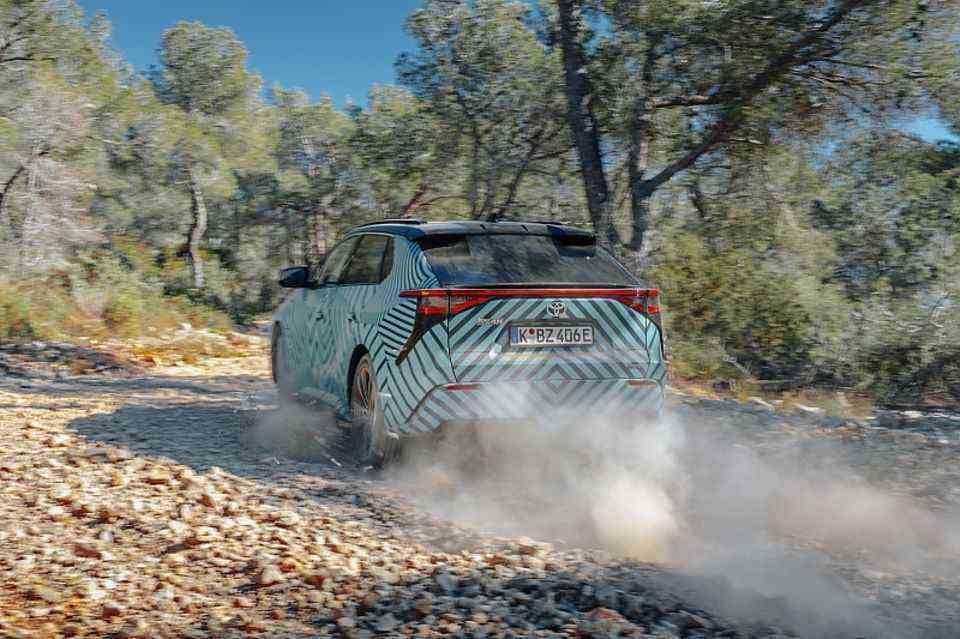Toyota bZ4X 4×4
In new ways
Toyota bZ4X 4×4
© press-inform – the press office
Toyota is now also entering the large electrical business with a delay. The bZ4X not only has a bold name, but is also the first of 30 zero-emission vehicles that the Japanese plan to launch by 2030.
Toyota has a run – and what a run. While most car manufacturers are currently reporting record earnings, but due to the chip crisis they put fewer vehicles on the streets than in previous years, the situation is very different for the Japanese. 10.49 million vehicles delivered mean not only the undisputed number one on the world market, but also an impressive increase of ten percent compared to 2020. When it comes to electric cars alone, Toyota has not even played in the second league, because combustion engines and hybrids continue to dominate here sound on. That should change with the new electric crossover bZ4X. CEO Akio Toyoda announced an electric offensive, in which around 38 billion euros will be made available for the battery electric vehicle program; however, by 2030, the same amount should go to hybrid, plug-in hybrid and fuel cell vehicles. Instead of the previously planned two million, Toyota wants to produce at least 3.5 million electric vehicles by 2030; a million of them under the Lexus brand.
The non-catchy name of the Toyota bZ4X is composed of the initials of the Beyond Zero motto (bZ), the number 4 (vehicle size similar to the RAV4) and the letter X, which refers to the crossover body. Its main competitors are the VW ID with prices starting at 47,490 euros. 4 / Skoda Enyaq, the twin Kia EV6 / Hyundai Ioniq 5 or a Ford Mustang Mach-E. There will be two main versions of the 4.69 meter long bZ4x at market launch: a front-wheel drive with 150 kW / 204 hp and an all-wheel drive with 160 kW / 218 hp, which is powered by two twin engines, each with 109 hp. A water-cooled 71.4 kWh lithium-ion battery, which is installed flat in the vehicle floor, provides the necessary power flow. Toyota specifies the average consumption in a range from 15.9 to 19.3 kWh and ranges between 370 and 450 kilometers before it goes back to the charging station.
As with the vehicles on the VW Group’s modular electrical kit, the interior can be air-conditioned using a heat pump in order to avoid using the battery for this function. When it is launched next summer, the onboard charger will only be available in a single phase with an output of six kilowatts. The modern 11 kW three-phase charger will follow towards the end of the year. DC fast charging via CCS2 is possible with up to 150 kW, which means that 80 percent of the charge can be fed back into the battery within 30 minutes.
In terms of design, the bZ4X follows the current Toyota line with numerous edges, wide wheel arches and pithy light units. A wheelbase of 2.85 meters means 15 cm more than in the comparable mass model Toyota RAV4 and a significant plus in the interior of the electric crossover. In the rear, not only is the increase in length noticeable, but also the lack of a center tunnel, which gives the feet more room to manoeuvre. There is also plenty of headroom for rear passengers up to a height of 1.90 m, while the trunk volume of 452 liters is well below that of many competitors. The RAV4, for example, has a capacity of 520 to 580 liters behind the electric charging flap. The huge solar roof brings light into the cabin and is also able to capture energy that is fed into the battery. According to Toyota engineers, this can add up to 1,800 km of additional range per year – when the sun is shining.
The dashboard presents itself as taking some getting used to as the name of the new beacon of hope – at least for the driver. Because this looks at a just seven-inch digital display, which is arranged similar to Peugeot above the steering wheel. The problem for some drivers is that the upper rim of the steering wheel can obscure some of the information on the instrument display, forcing them to leave their preferred driving position. And a head-up display cannot be replaced by this hybrid solution anyway. Better is the central 12.3-inch infotainment in the middle, which offers better graphics and more intuitive operation compared to current Toyota vehicles. The new rotary knob on the center console controls the gear selection and the different driving modes can be controlled on the right-hand side. The quality of the materials has significant potential for improvement, because many things are made of cheap-looking hard plastic. In addition, the driver feels trapped between the excessively wide door panels and the intrusive center console; quite in contrast to most electric cars with their wide and free front rows of seats.
The driving performance is satisfactory, even if the maximum power of the approximately two-ton Toyota bZ4X 4×4 is limited to 160 kW / 218 hp and is therefore hardly more than that of the front-wheel drive vehicle. The 160 km/h top speed, like that of many a competitor, is not enough to satisfy all customers. The maximum torque of 336 Nm is better, which also ensures that the Japanese electric all-wheel drive accelerates from 0 to 100 km/h in 6.9 seconds. Both on the highway and on the narrow and winding roads in the Spanish mountains, the bZ4 left a good dynamic impression in terms of chassis rigidity. Lateral body movements are kept within limits without compromising comfort on bad roads too much. Also convincing: the well adjustable brake. However, there is only one level of recuperation and no steering wheel paddles. Hardly relevant in reality, but not unimportant not only for the positioning: the Toyota bZ4X 4×4 was also able to convince in light terrain. Grip on gravel is excellent and when road conditions deteriorate the electric Japanese shows it can handle even deep mud. The approximately 30 cm ground clearance and a wading depth of 50 cm are helpful for this. Let’s see if the Toyota bZ4X has the potential to become a new RAV4.


